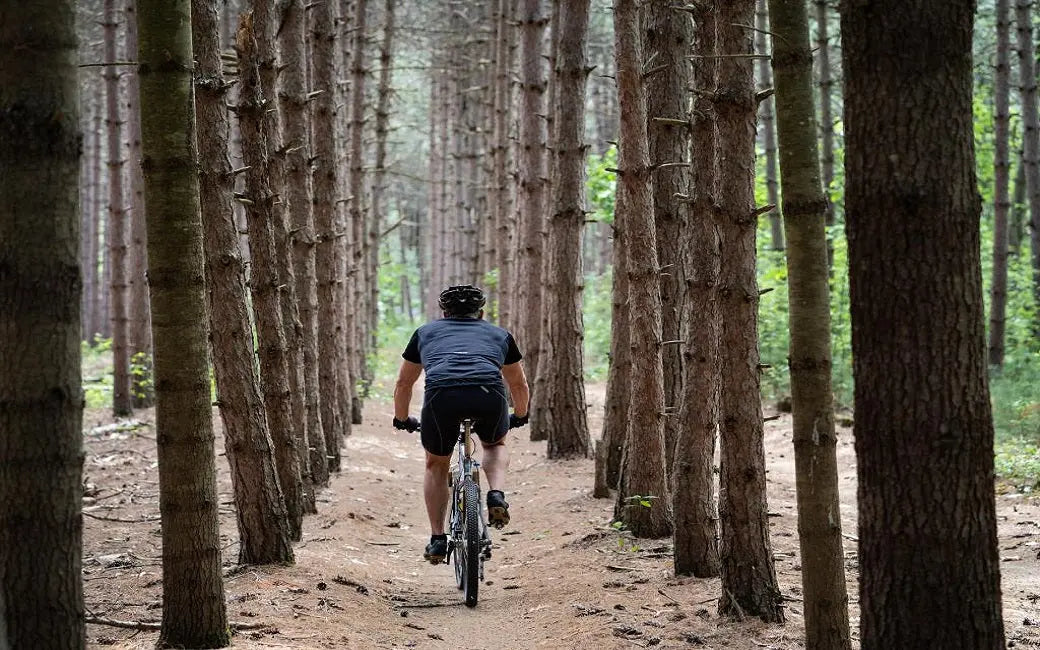
- by HOVSCO Official
Tips on How to Choose Handlebars
- by HOVSCO Official
Choosing the right handlebars enhances comfort, control, and efficiency for your riding style, whether commuting, touring, or mountain biking. Key factors include handlebar type (flat, riser, drop, bullhorn), width, material, and compatibility with your bike and body. Selecting the appropriate handlebars transforms your riding experience, reducing strain and improving handling.
Key factors include handlebar type (flat, riser, drop, bullhorn), width, material (aluminum, carbon fiber), rise, sweep, and compatibility with stem diameter and brake/shifter systems. The right handlebars improve comfort, control, and aerodynamics. They also reduce strain on wrists, shoulders, and back, enhancing overall riding enjoyment.
Flat handlebars are ideal for commuter and mountain biking, offering control and an upright posture. Drop bars suit road cyclists seeking aerodynamic positions and multiple hand grips for long-distance comfort. Riser bars provide extra height and comfort, perfect for urban and trail riders needing maneuverability. Cruiser bars promote a relaxed, upright stance for casual rides. Choosing the right handlebar depends on your riding style, terrain, and comfort preferences to enhance control and reduce fatigue.
Different handlebar types cater to specific riding styles:
Choosing the right type optimizes comfort and performance based on your primary use.
Handlebar Types and Riding Styles
| Handlebar Type | Riding Style | Benefits |
|---|---|---|
| Flat | Urban/MTB | Control, upright position |
| Riser | Mountain Biking | Comfort, stability on rough terrain |
| Drop | Road Cycling | Aerodynamics, multiple hand positions |
| Bullhorn | Aggressive Riding | Aerodynamics, control |
| Butterfly | Touring | Numerous hand positions, reduces fatigue |
Handlebar width impacts steering responsiveness and stability. Wider handlebars (640-800mm) offer greater control and stability for mountain biking, while narrower handlebars (400-440mm) improve aerodynamics for road cycling. Incorrect width leads to discomfort and reduced control. Measure shoulder width to determine optimal handlebar width for your body size and riding style.
Handlebar material affects weight, stiffness, and vibration damping. Aluminum handlebars are cost-effective, durable, and suitable for most riding conditions. Carbon fiber handlebars are lighter and absorb vibrations, improving comfort on long rides. Titanium handlebars combine strength, lightweight, and vibration damping, but are more expensive.
Material Comparison
| Material | Weight | Stiffness | Vibration Damping | Cost |
|---|---|---|---|---|
| Aluminum | Medium | High | Low | Moderate |
| Carbon Fiber | Light | High | High | Expensive |
| Titanium | Light | Medium | High | Very High |
Rise (vertical height) and sweep (backward angle) affect riding posture and wrist comfort. Higher rise brings handlebars closer, creating a more upright, relaxed position. Greater sweep angles reduce wrist strain. Adjust rise and sweep to achieve a natural, comfortable hand position, especially on long rides.
E-bikes often benefit from reinforced handlebars to manage added weight and speed. Some e-bike-specific handlebars feature integrated cable routing for clean aesthetics and enhanced durability. Brands like HOVSCO incorporate ergonomic designs that complement the upright riding position common on e-bikes, enhancing comfort and control.
Check stem diameter, brake/shifter mounting compatibility, and internal cable routing compatibility. Measure stem clamp diameter (25.4mm, 31.8mm, 35mm) to match handlebars. Ensure handlebars accommodate your brake and shifter types (hydraulic, mechanical). If your e-bike has internal cable routing, choose handlebars with appropriate ports.
When selecting handlebars, prioritize fit and comfort based on your riding style. Measure your shoulder width to determine the correct handlebar width, and consider rise and sweep for wrist comfort. Choose materials that balance weight and durability. For e-bikes, consider handlebars designed to handle the added weight and speed. Finally, ensure compatibility with your bike's stem, brakes, and shifters. Brands like HOVSCO offer handlebars optimized for e-bike ergonomics, enhancing your overall riding experience.
"HOVSCO recognizes that handlebars are a critical touchpoint for e-bike riders, impacting comfort and control significantly," says a HOVSCO product specialist. "Our handlebars are designed with ergonomic principles, catering to the upright riding posture common on e-bikes. We focus on materials that balance durability and vibration damping, enhancing ride quality. Always ensure handlebars are compatible with your e-bike’s components for optimal performance and safety."
What handlebar type is best for city commuting?
Flat bars offer excellent control and an upright position for city commuting.
How does handlebar width affect handling?
Wider handlebars increase stability, while narrower ones improve aerodynamics.
What material is best for handlebars?
Aluminum balances cost and durability, while carbon fiber offers lightweight and vibration damping.
What is handlebar rise?
Rise is the vertical height of the handlebars, affecting riding posture.
How do I ensure handlebar compatibility with my bike?
Check stem diameter, brake/shifter compatibility, and cable routing compatibility.
Choose handlebars based on your riding style, comfort, and bike type. Flat bars offer control for commuting and off-road use, while drop bars are ideal for speed and aerodynamics. Consider width, rise, and sweep to match your body and riding posture. Proper handlebar fit reduces strain and improves ride performance.
One of the easiest components on your bicycle to overlook is the handlebar. It is not necessary to stick with the bar that comes with your bike. Switching to a different handlebar can often have a measurable effect on your bike's handling and your comfort.
Consider the following drop bar and flat bar options for your bike:
Share:
How to Choose the Most Suitable Saddle?
What You Need to Know About Choosing Pedals